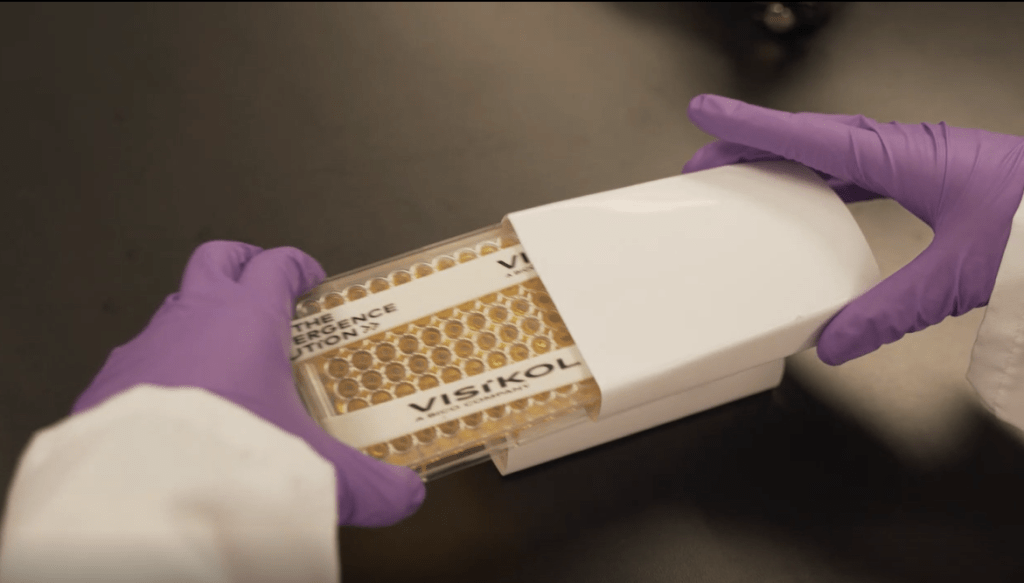 Drug discovery is a complex process that involves identifying and developing new drugs to treat diseases. It is a time-consuming and expensive process that requires extensive testing to ensure the safety and efficacy of new drugs. In vitro models are laboratory models of biological systems that are used to study the effects of drugs and other compounds. They are used in drug discovery to screen potential drug candidates for efficacy and toxicity before moving on to expensive and time-consuming animal studies. In vitro models can be either 2D or 3D, with 3D models being more advanced and better able to replicate in vivo characteristics.
Drug discovery is a complex process that involves identifying and developing new drugs to treat diseases. It is a time-consuming and expensive process that requires extensive testing to ensure the safety and efficacy of new drugs. In vitro models are laboratory models of biological systems that are used to study the effects of drugs and other compounds. They are used in drug discovery to screen potential drug candidates for efficacy and toxicity before moving on to expensive and time-consuming animal studies. In vitro models can be either 2D or 3D, with 3D models being more advanced and better able to replicate in vivo characteristics.
One of the most important in vitro models used in drug discovery is the liver model. The liver is responsible for metabolizing drugs and removing toxins from the body. Therefore, it is crucial to have an accurate representation of liver function when testing new drugs. HUREL® Micro Livers are self-assembling co-cultures of primary cryopreserved hepatocytes combined with a non-parenchymal cell line. They have been demonstrated to produce the longest-enduring, most phenotypically stable, and metabolically competent liver tissue construct developed to date.
HUREL Micro Livers
The HUREL micro livers have superior metabolic competency, derived from their multi-fold greater hepatocyte number and greater cell density within the microtiter well. They also have rock-solid, long-enduring phenotypic stability, which creates the foundation for the superior metabolic competency that distinguishes data generated on the HUREL platform from that of primary hepatocytes cultured in suspension, in monoculture, in micropatterned arrays, and in 3D spheroids. This form of liver cell culture is used in HUREL Micro Livers, which have been demonstrated in peer-reviewed studies to produce the longest-enduring, most phenotypically stable, and metabolically competent liver tissue construct developed to date.
Self-assembling co-culture is a patented form of liver cell culture that involves combining primary cryopreserved hepatocytes with a non-parenchymal cell line. The hepatocytes spontaneously self-assemble into colonies, resulting in a liver tissue construct that is phenotypically stable and metabolically competent. Metabolic competency in in vitro models is measured by the ability to generate metabolites that closely correlate to those generated by parent compounds in vivo. HUREL Micro Livers have superior metabolic competency due to their multi-fold greater hepatocyte number and therefore greater cell density within the microtiter well, which is the characteristic most centrally responsible for HUREL’s delivering data of superior translational predictivity for DMPK studies. Additionally, HUREL micro livers produce robust metabolite yields that closely correlate to metabolites generated by parent compounds in vivo.
The use of HUREL Micro Livers in drug discovery can have a significant impact on the pharmaceutical industry and patient outcomes. These liver cell cultures have been demonstrated to produce the longest-enduring, most phenotypically stable, and metabolically competent liver tissue construct developed to date. They can predict drug metabolism, clearance, and toxicity, and evaluate the relevance of in vitro methodologies for predicting drug-induced liver injury. The HUREL micro liver models have been used in dozens of publications to date by the world’s leading pharmaceutical companies and are integral to services at many contract research organizations.
HUREL Micro Livers are a predictive in vitro tool that can generate metabolites that other in vitro models cannot. They have been used successfully to produce 3-hydroxy desloratadine, a circulating metabolite that other in vitro models were unable to generate. The HUREL micro liver models have been used in dozens of publications to date by the world’s leading pharmaceutical companies and are integral to services at many contract research organizations. The HUREL Micro Liver’s superior metabolic competency, derived in part from their multi-fold greater hepatocyte number and therefore greater cell density within the microtiter well, is the characteristic most centrally responsible for HUREL’s delivering data of superior translational predictivity for DMPK studies. To learn more about HUREL® Micro Livers, please reach out to a member of our team!
